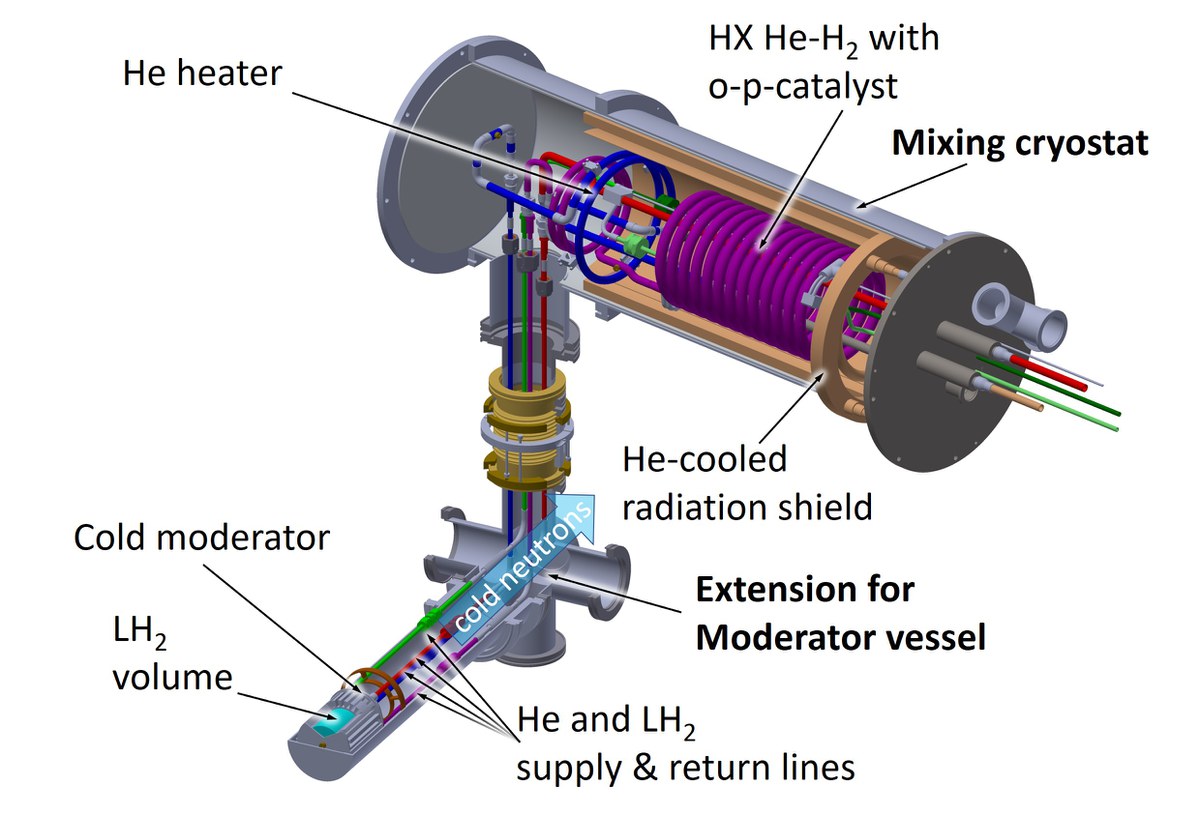Cold Moderator Systems
Cold moderators decrease the neutron energy spectrum below the thermal spectrum by moderating the neutrons in a suitable moderator material at cryogenic temperatures. At the HBS the cold moderator becomes an intrinsic part of the instrument and will be optimized individually to the instrument requirements. Suitable cold moderator materials are e.g. liquid hydrogen H2, solid methane CH4 or solid mesitylene C9H12. Particularly well suited for a one-dimensional cold moderator is para-hydrogen.
A one-dimensional cold finger moderator has been developed in collaboration with the Technical University Dresden. It consists of a long vacuum tube with a small cryogenic moderator vessel (e.g. cylindrical with 10 cm in length and 2 cm in diameter). This design enables the installation of the cold moderator inside the thermal moderator. The cold neutrons can be emitted freely towards the instrument through the extraction channel with a view onto the entire volume of the cylinder. In the prototype design of the cold finger moderator, all supply lines (e.g. cryogenic supply) and wires (e.g. measurement and control) are located inside the vacuum tube but outside of the cold neutron flight path.


Publications:
T. Cronert et al., Compact and Easy to Use Mesitylene Cold Neutron Moderator for CANS, Physica B, 551, 337, 2018
S. Eisenhut et al., Cryostat for the Provision of Liquid Hydrogen with a Variable ortho-para Ratio for a Low-dimensional Cold Neutron Moderator, EPJ Web Conf., 231, 04001, 2020
Members
Dr. Ulrich Rücker
JCNS-2 / JCNS-HBS: Scientific Staff High Brilliance Neutron Source Project (HBS) Authorised representative for radiation protection; B-SSB for X-ray instrumentation in JCNS
- Jülich Centre for Neutron Science (JCNS)
- Quantum Materials and Collective Phenomena (JCNS-2)
Room 202
Dr.-Ing. Johannes Baggemann
JCNS-2 / JCNS-HBS: Scientific Staff High Brilliance Neutron Source Project (HBS) Konzeption, Auslegung und Sicherheitsanalysen
- Jülich Centre for Neutron Science (JCNS)
- Quantum Materials and Collective Phenomena (JCNS-2)
Room 305


